I have already gone through the thread Any difference between await Promise.all() and multiple await?, so I am clear about Promise.all and multiple awaits.
Still, I am not very clear about the below 2 scenarios.
In Case 1 why does it execute sequentially (takes 10s) whereas in Case 2 it executes in parallel (takes 4s)?
Case 1:
function promiseWait(time) {
return new Promise((resolve, reject) => {
setTimeout(() => {
resolve(true);
}, time);
});
}
async function test1() {
var t0 = performance.now()
var a = await promiseWait(1000)
var b = await promiseWait(2000)
var c = await promiseWait(3000)
var d = await promiseWait(4000)
var t1 = performance.now()
console.log("Call to doSomething took " + (t1 - t0) + " milliseconds."); //takes 10secs
}
test1()Case 2:
function promiseWait(time) {
return new Promise((resolve, reject) => {
setTimeout(() => {
resolve(true);
}, time);
});
}
async function test2() {
var t0 = performance.now()
const p1 = promiseWait(1000);
const p2 = promiseWait(2000);
const p3 = promiseWait(3000);
const p4 = promiseWait(4000);
const a = await p1;
const b = await p2;
const c = await p3;
const d = await p4;
var t1 = performance.now()
console.log("Call to doSomething took " + (t1 - t0) + " milliseconds.")
}
test2()
